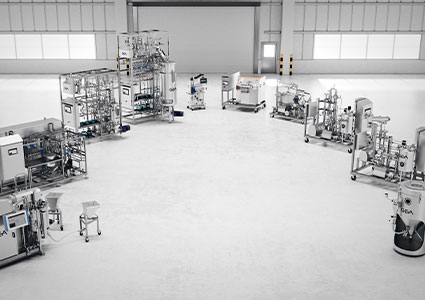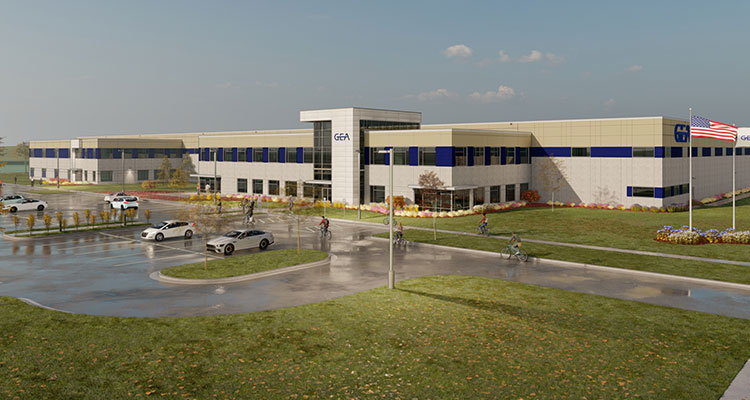Growth is on the horizon as GEA United States remains committed to new food development
GEA is one of the world’s largest systems suppliers for the food, dairy, beverage, and pharmaceutical sectors. The global group focuses on advanced process technologies, components, machinery, sustainable solutions, and even full plant installations. With more than 18,000 employees, GEA has a strong global presence and helps customers achieve sophisticated production processes for a wide range of applications.
The group is split into different business units, and all business divisions are present in North America, enabling the company to deliver end-to-end solutions. Responding to consumer demand for more nutritious, sustainable, and ethical foods, GEA has recently established a new business unit, New Food, to focus primarily on the production of alternative protein foods and protein-rich components. To learn more about the company’s New Food division, we’re joined by Timothy Barnett, Director of Process and Offer Management, New Food, North America.
“GEA is a German based company that’s been around for over 140 years,” opens Timothy. “We focus primarily on the food, dairy, beverage, chemical, and pharmaceutical industries, all divided across multiple business units. We cover everything down to individual components through to complete systems, lines, and plant installations.
 “In the US, we have different offices each with a specific focus on a certain technology or business area, all equipped with experts in their respective fields. My team specifically focuses on mixing and blending, membrane filtration, fermentation and bioprocessing, and thermal processing. Others in this division focus on spray dryers, evaporators, filling and packaging and so on. The other business units include mechanical components (such as centrifuges, homogenizers and valves), and then even final product forming processes like cooking, frying, slicing, flash freezing, and packaging. We’re fortunate to have all capabilities from across our portfolio present in the US.
“In the US, we have different offices each with a specific focus on a certain technology or business area, all equipped with experts in their respective fields. My team specifically focuses on mixing and blending, membrane filtration, fermentation and bioprocessing, and thermal processing. Others in this division focus on spray dryers, evaporators, filling and packaging and so on. The other business units include mechanical components (such as centrifuges, homogenizers and valves), and then even final product forming processes like cooking, frying, slicing, flash freezing, and packaging. We’re fortunate to have all capabilities from across our portfolio present in the US.
“My role sits in our Liquid Powder Technologies (LPT) division, where I hold responsibility for representing many of the available technologies that we use in our New Food business,” he explains. “Our venture aims to find new solutions and technologies for customers in the food industry as they continue to meet new demands that cater to the world’s growing population. Having many of these technologies in our existing portfolio, we leverage our expertise and experience to identify new, innovative applications for existing technologies, proven at commercial scale.”
“GEA’s New Food division recognizes that although the world’s population is predicted to reach ten billion by 2050 and subsequently drive demand for nutrition, we cannot expand existing agricultural production capacities without severe environmental and societal damage. With demand for sustainable solutions, combined with constantly evolving dietary preferences, many people are looking for alternative food products,” he explains.
The company’s New Food division embraces the principle of feeding more people with fewer resources, using traditional processing methods, precision fermentation and cell culture to create hybrid products. These ranges include plant-based, mycelium-based (fungi-based foods), precision fermentation for proteins, sweeteners, fats, microbes, and algae-based foods, cell culture, and novel foods.
Cutting-edge capabilities
To accelerate product development in this field, GEA is building a new test center in Janesville, Wisconsin. “The new site in Janesville will be a center of excellence, prioritizing new food,” Timothy elaborates. “With the overall technical responsibility for this project, I’m super excited about it and not a day goes by where I don’t think about the new facility. This site will differ from our others, as it is not only a dedicated test center for single unit operations but will be capable of end-to-end processing from raw material to a finished ingredient.
“We’re installing mixing and blending capabilities, membrane filtration and centrifugation technologies, and thermal processing facilities, as well as bioreactors to enable bioprocessing. Our aim is to be able to take raw material from a customer and design an experiment that will go through each of these unit operations to deliver a quality final product that meets customers’ requirements.”
“We’re currently on target with the project; the concrete is poured, the building is going up, and we’re in the final stages of equipment design, which will then be installed, commissioned, and tested. We’re aiming to be fully operational by mid-2025, and we’re looking forward to showcasing our capabilities with new customer projects and collaborations.
“The new site has also allowed us to work with our existing supply network, as we can showcase some of our strategic suppliers’ products in our test center,” he says. “The site will act as a fully functioning showroom where customers can come and see the equipment, components, or technologies at work.”
GEA’s new US site also aligns with the company’s sustainability goals. “With our purpose of ‘engineering for a better world,’ we take sustainability very seriously,” Timothy states. “Our new test center is located on a brand-new campus that is built to all current GEA environmental standards and policies. We’ve also installed an electric steam boiler to supply our in-process heat without the use of fossil fuels on site.”
As our conversation draws to a close, Timothy concludes: “The Mission 26 strategy is well known across the company and is based on seven pillars. New Food is one of these seven pillars, which gave us the momentum to launch the test center in Wisconsin. The new site will be a platform for several innovations and collaborations, bringing us opportunities to create a solid pipeline of customer testing. As we gain trust and show off our new capabilities, we expect to enable our customers to execute projects that wouldn’t have been possible without the new facility.”
